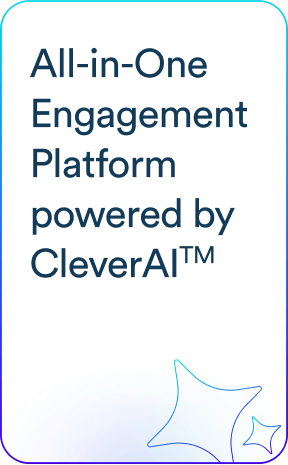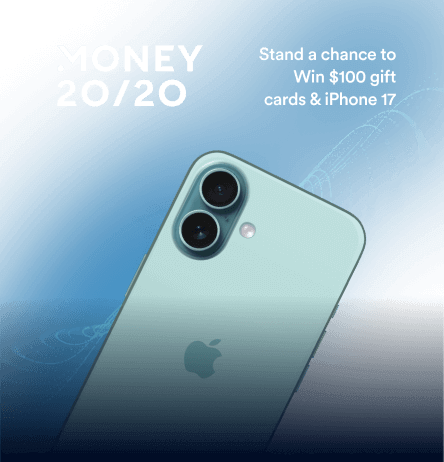In our experience powering over 8,000 mobile app customers, we’ve noticed that the brands who have been consistent in retaining users are those who have assiduously committed to 4 pillars of customer retention, namely:
- Audience analytics
- User segmentation
- Conversations
- Native UI Experiences
And since we’re dedicated to teaching you all we know about customer retention, allow us to break down each of the four pillars to a successful mobile retention strategy.
1. Audience Analytics: Knowing Your Users
With the great advances in data software, the discovery and interpretation of meaningful trends in your customer data is of paramount importance. Especially since retaining your customers depends on data-backed decision making.
The first pillar is audience analytics, because:
How Analytics Help
Any analytics software worth its salt will answer:
- Who are your users?
- Where are they located?
- What do they do in your app?
- Most importantly, when do they drop off?
In order to put a retention strategy in place and keep it functioning smoothly, you need the data that your audience analytics tools can provide. Knowing specific data points such as monthly retention rates, daily active users, and churn rates provide the insights necessary to optimize your customer experience. They help prioritize which aspects of the app needs further development.
In short, analytics assist you in understanding and connecting your customers’ data with an effective retention plan so your mobile brand thrives and survives.
Analytics Features You Need to Succeed
- Funnels: Identify how users navigate your app and where they drop off before reaching a conversion step.
- Flows: Look at all the possible conversion paths customers could take so you know how and where to engage them within your app.
- Cohort Analysis: Analyze how users in a specific cohort are behaving so you can optimize the user experience.
- Uninstall Tracking: Monitor when a user uninstalls so you can send targeted campaigns to win them back.

2. User Segmentation: Targeting the Right Customers
Any good retention strategy depends on engaging your users and getting them active in your mobile app. Which means you need to be messaging the right people – i.e., the right user segments.
The second pillar is user segmentation, because:
How User Segmentation Helps
Customer segmentation involves dividing customers into groups based on similar traits. This allows for highly granular messaging that addresses user behaviors, interests, location, and/or demographics.
Segmentation also maximizes campaign budgets since you can target those most likely to convert, without wasting resources on users who will never make a purchase. Plus, you can personalize marketing messages to effectively nurture prospects later on down the line.
Types of User Segmentation
The most common ways to segment users:
- Demographic Segmentation: by gender, age, occupation, marital status, income
- Geographic Segmentation: by location, i.e., country, province, state, city, town
- Technographic Segmentation: by technology used, i.e., browser, operating system, software, brand/model of device
- Psychographic Segmentation: by interests, attitudes, values, personality traits
- Behavioral Segmentation: by action or inaction, spending/consumption habits, feature use, session frequency, browsing history, average order value, etc.Under behavioral segmentation, you can segment users on the basis of the recency, frequency and monetary value (RFM) of their actions. Which means RFM analysis gives you the ability to target those users who can drive up your CLTV and revenues and not waste time and money on those who will most likely never convert.

Segmentation Tools to Use
- Intent Based Segmentation: Determine the likelihood that users will meet a time-bound goal (such as complete a purchase within X number of days). If you can identify the most likely, moderately likely, and least likely customer segments to achieve this outcome, you can better customize your message for each group.
- Psychographic Segmentation: Group users by their interests, habits, lifestyle, or personality traits. If you can do this, you have a powerful tool to make your marketing messages more engaging. Psychographics instantly make your communication more relevant to the end user.

3. Conversations: Engaging Users via Omnichannel Campaigns
If you make good use of analytics and segmentation, you have everything you need to put together an action plan. The only thing missing is a way to orchestrate your omnichannel campaigns so you can send it out to your users on the marketing channels they already use.
The third pillar is conversations, because:
How Conversations Help
Conversing with your users is a surefire way to send them marketing messages as well as gather their feedback on your app. It’s a way to build a relationship between your brand and your customers. Assuming, of course, that you do it correctly.
Remember that communication is a two-way street (as relationship experts like to say). And conversations imply a back-and-forth. So don’t expect to keep hold of your users if you’re only blasting messages at them and not listening to their feedback or acknowledging that you heard them.
Conversation Tools to Use
There are so many possible channels to engage your users in ongoing conversations. These can range from:
- Social media
- Push notifications
- In-app notifications
- Mobile app inbox
- Webhooks
- Mobile SMS or MMS
- Google Ads
- WhatsApp for Business
- Desktop & mobile exit intent
The question however is: are you on the channels that your customers want to use?
With actionable data and a suite of omnichannel conversation tools, you’ll have the power to not just analyze, but also engage your users with the right message on the right channel at exactly the right moment. Which leaves us with the final pillar.

4. Native UI Experiences: Testing & Deploying Quickly
Creating native UI experiences is simply about giving your customers an experience that matches their app’s native operating system — whether iOS or Android.
The problem with testing and deploying new UI variations is that it typically takes a very long, circuitous route through your development process before you can even test anything with an actual user.
In today’s day and age, the demands are to fail fast. Get your new feature out and test it on the users as soon as you can. Due to the long development -> testing -> deployment cycles, this idea falls flat on its face.
But what if you could cut this time down in half? And what if you could do it even without touching the code base?
The fourth pillar is native UI experiences, because:
How Native UI Experiences Help
The ability to quickly build and test native UI experiences on chosen user segments helps marketers deploy new features faster. If a new variation affects core metrics such as engagement, revenue, and retention, then you can decide to deploy it and have the data to back your decisions.
It also helps you release in stages, by releasing a feature to a segment of users at one time instead of an all out release to your entire user base.
The best part is it becomes easier to run, analyze, and scale product experiments to thousands upon thousands of users if you’re using the right platform.
Native UI Experience Tools to Use
- Screen A/B Testing: Optimize your app’s experience by making it easy to run, analyze, and scale product experiments. Test new UI, features, and workflows to see if any one version actually moves the needle on key metrics such as revenue and retention.
Build Up the Customer Experience with These Pillars
As we mentioned above, we’ve seen our customers – mobile app brands and mobile marketers alike – create successful retention and engagement campaigns by incorporating these four pillars.
The reason why this combination of elements is so effective is because retention isn’t a set-and-forget strategy. It’s a constant and continuous process of optimization and improvement.
Building campaigns using these 4 tools — audience analytics, user segmentation, conversations, and native UI experiences — gives you a way to hook customers into making your app a habit.
If you need an intelligent mobile marketing platform that allows you to do all four, then you’re in the right place. CleverTap provides the tools and resources to manage your customer engagement and retention strategies. Sign up for a free demo of the most intelligent mobile marketing platform.

See how today’s top brands use CleverTap to drive long-term growth and retention
Shivkumar M 
Head Product Launches, Adoption, & Evangelism.Expert in cross channel marketing strategies & platforms.
Free Customer Engagement Guides
Join our newsletter for actionable tips and proven strategies to grow your business and engage your customers.















































